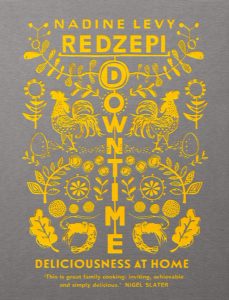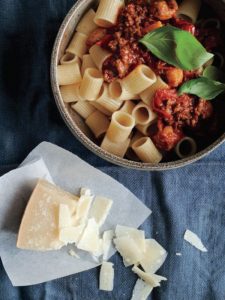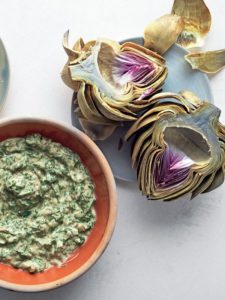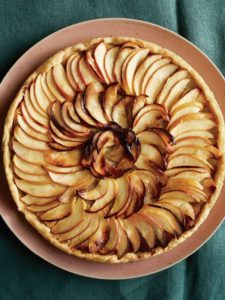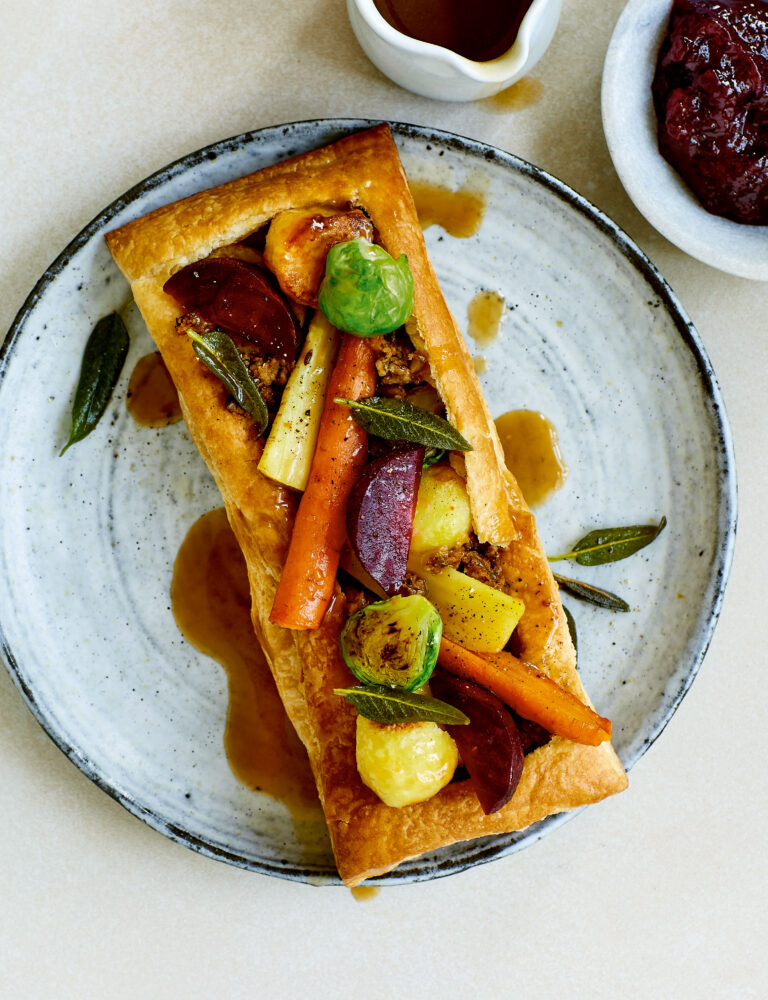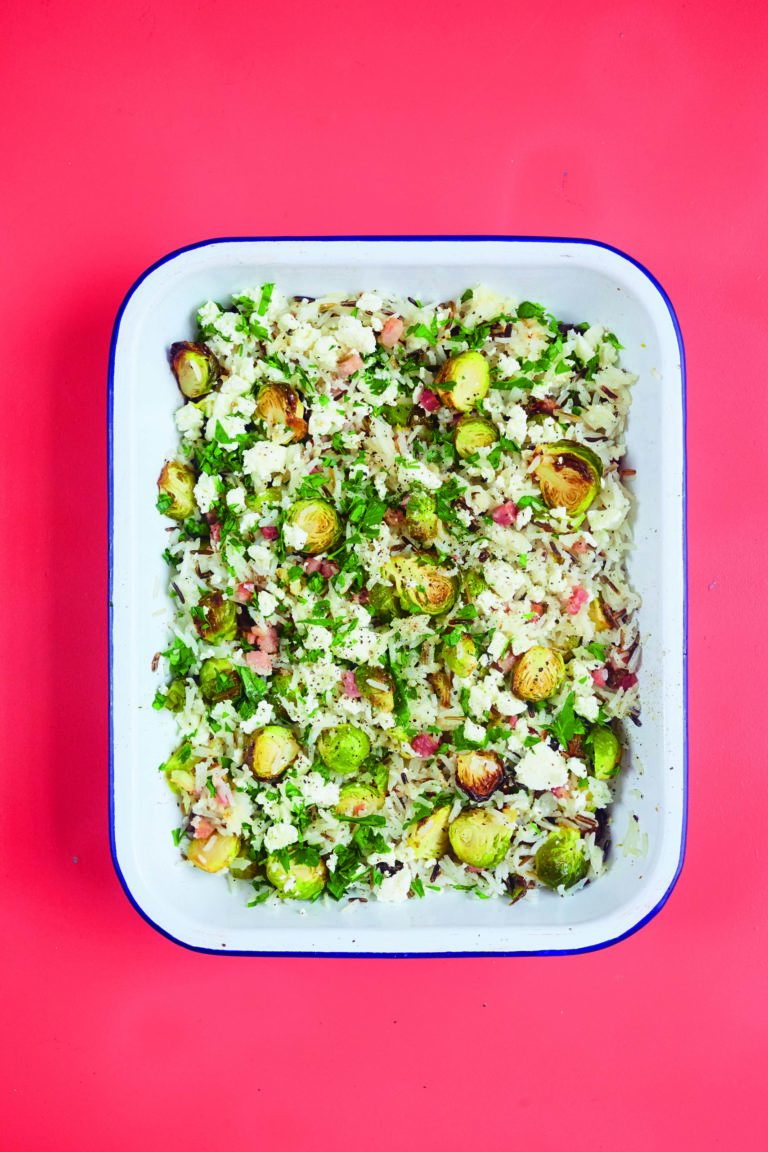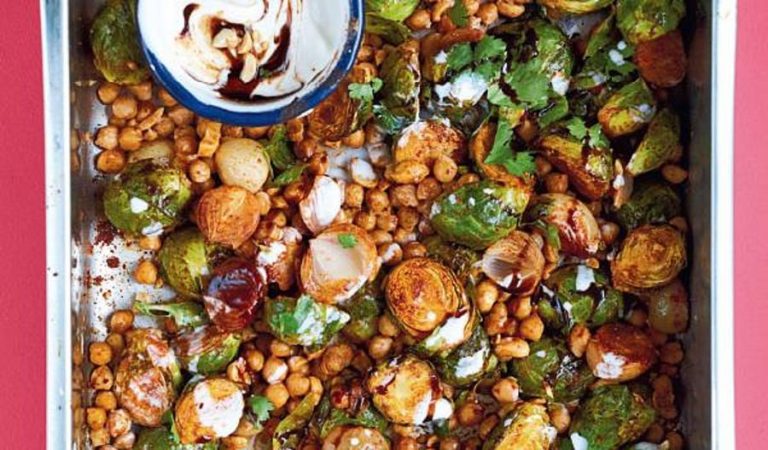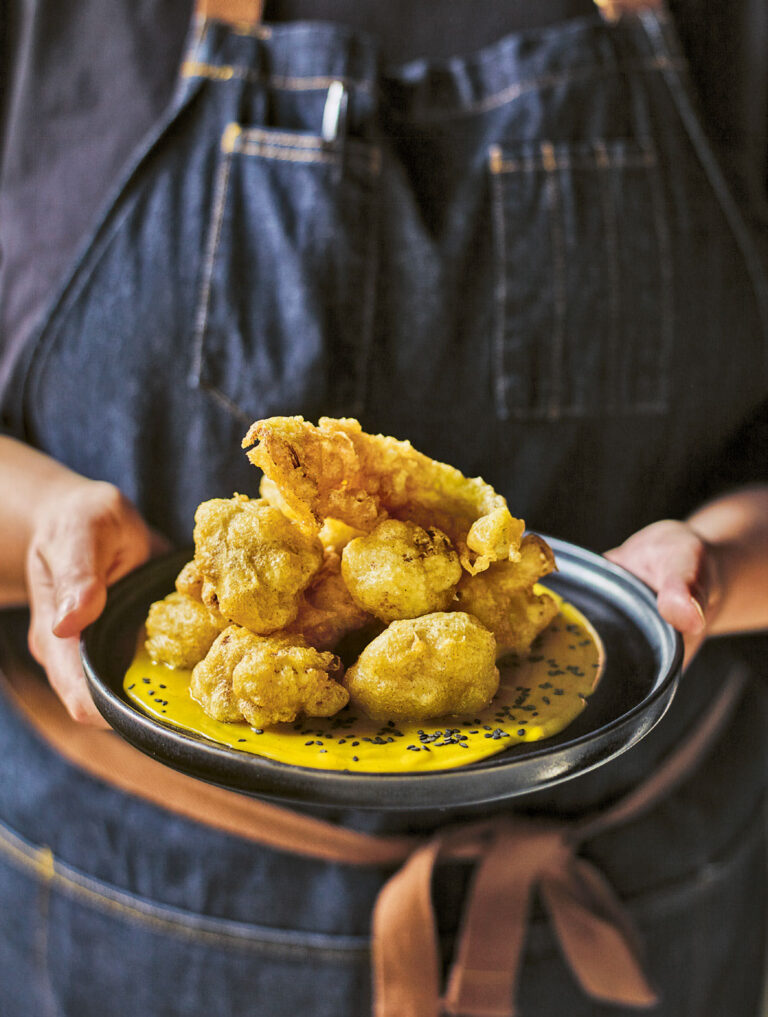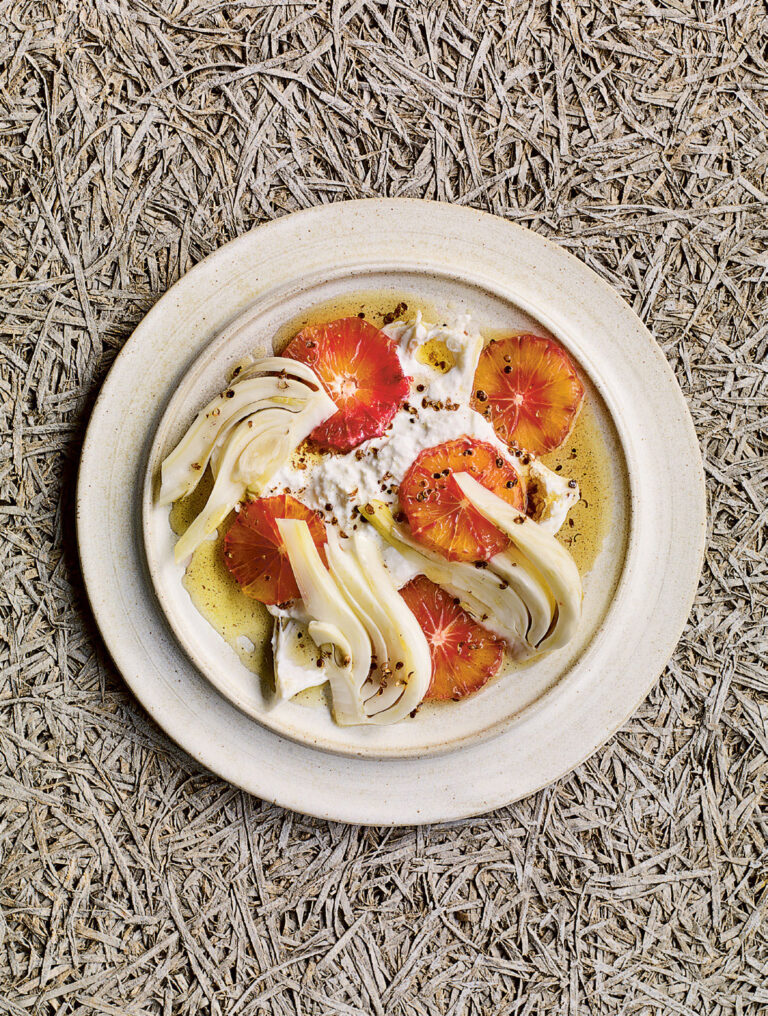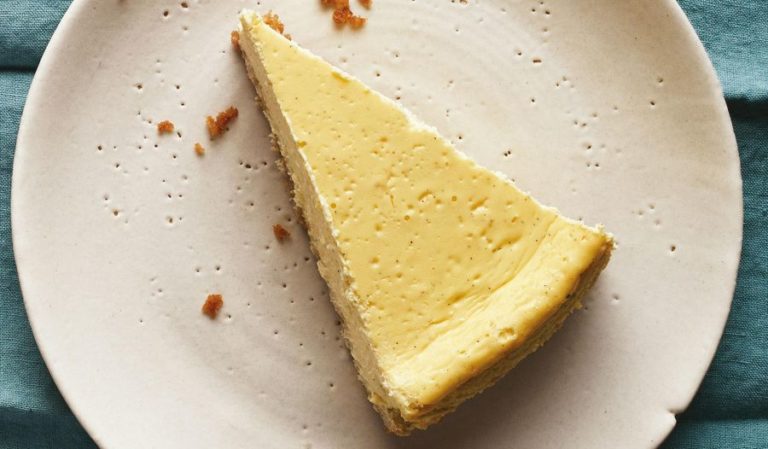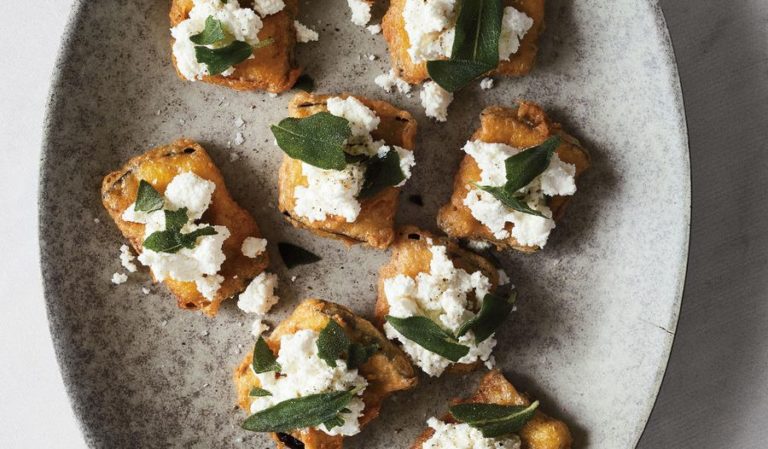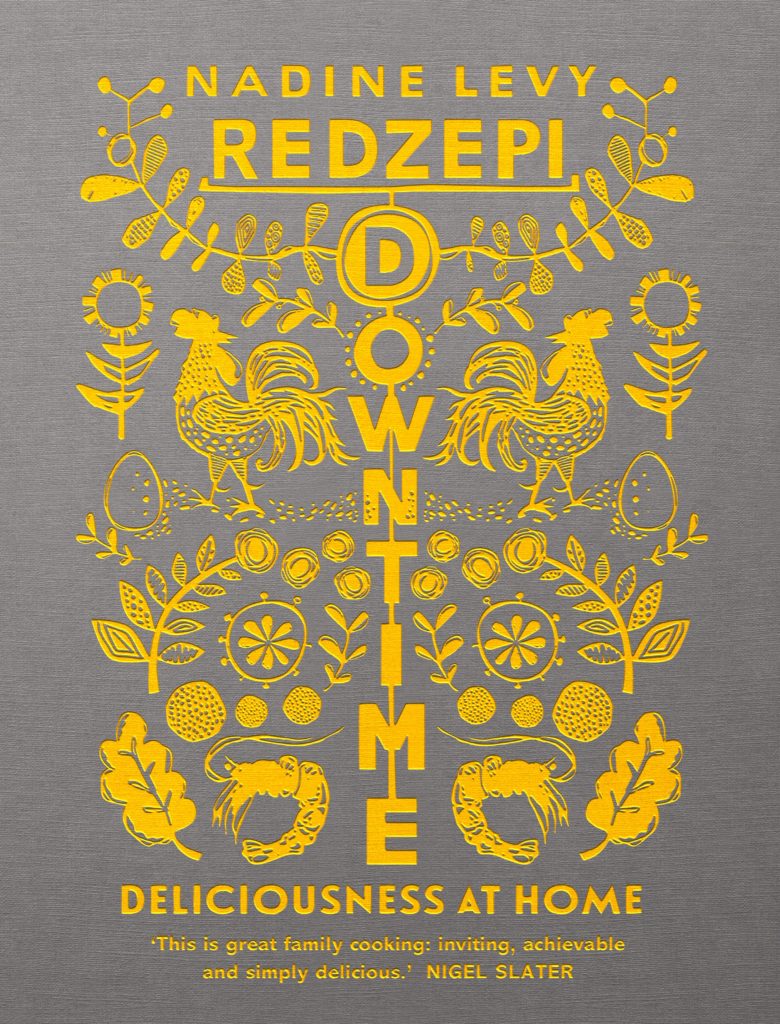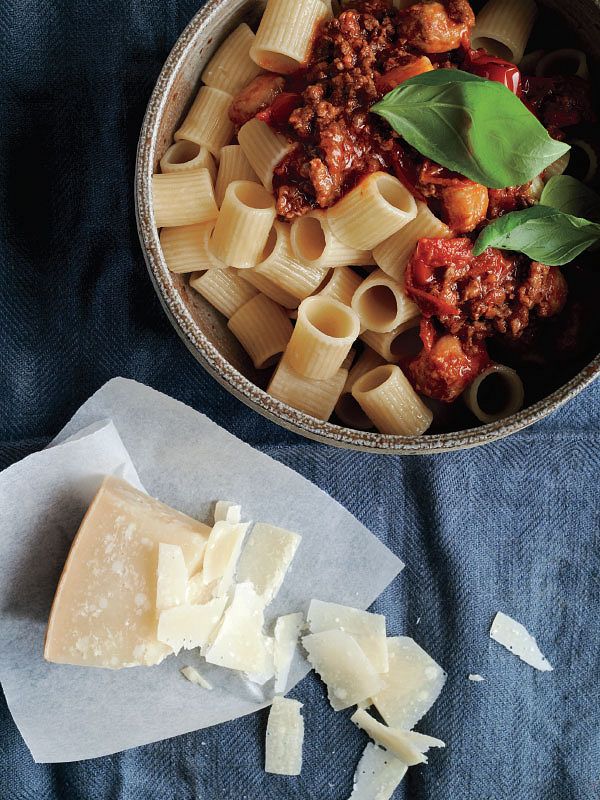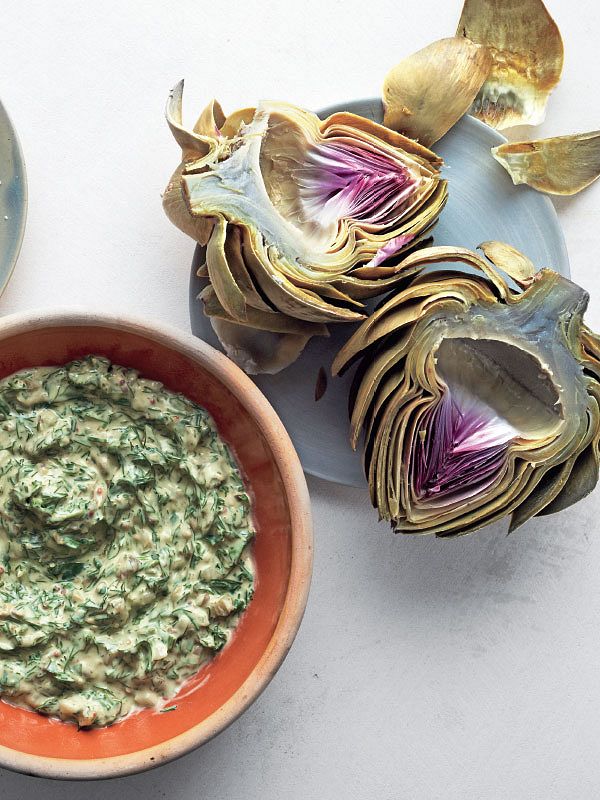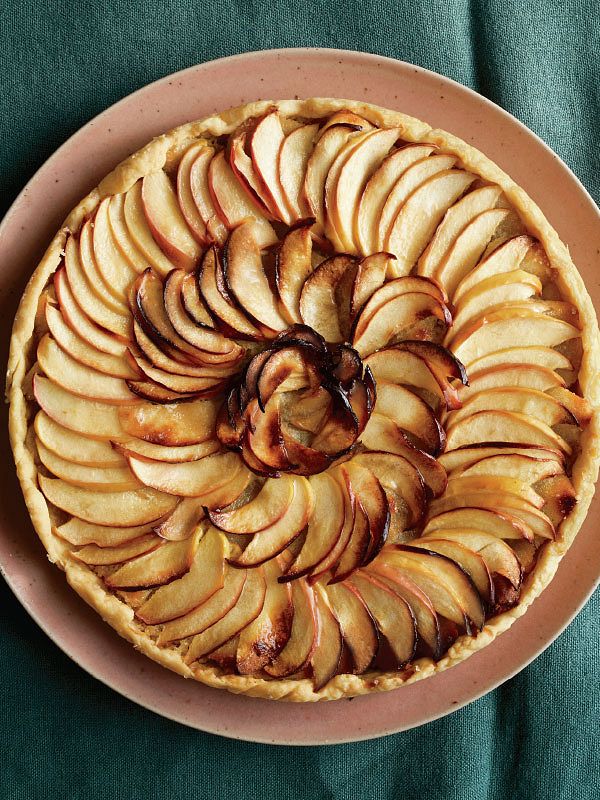Brussels Sprouts and Potato Cups with Beurre Blanc Sauce and Roe
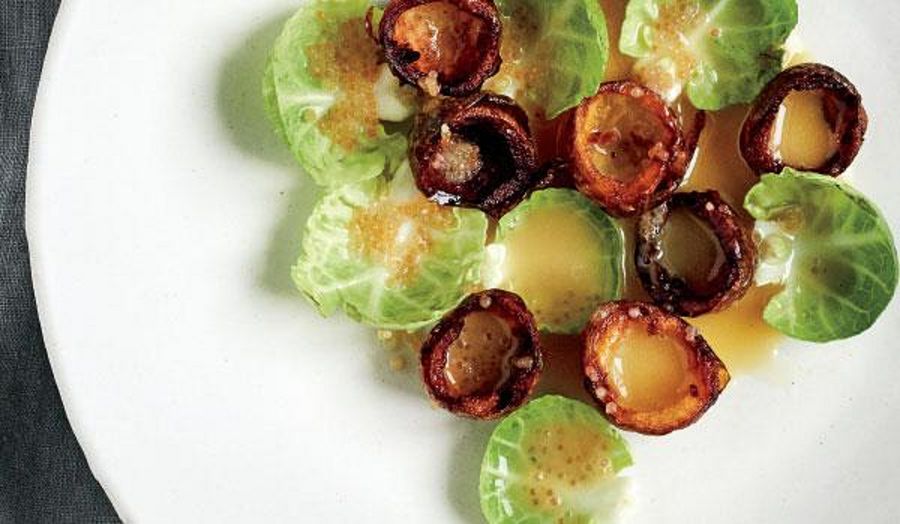
This refined recipe from Nadine Levy-Redzepi for Brussels Sprouts and Potato Cups, finished with a delicious beurre blanc sauce and roe, is a stunning dish to serve at a winter dinner party especially during the Christmas season.
Introduction
These little potato cups get the full black-tie treatment, with a soigné beurre blanc sauce, bright green Brussels sprout leaves and a bit of decadent fish roe. I love the way the sprout leaves and potato skins cup the delicious sauce. I served this as part of a five-course tasting menu I prepared for René, and it was the ideal light yet elegant way to start an important meal. Here in Denmark fish markets often carry several different types of fresh roe, and when it is in season we eat it on and off with everything all day long. I’ve called for whitefish roe here because I like its pale golden colour, but trout roe or any type of caviar you can afford would be great too and most are available online. Just avoid the preserved lumpfish roe in jars, as it will be too salty and sharp.
Ingredients
| 16 | baby potatoes |
| 500g (1¼ lb) | Brussels sprouts |
| 1 litre (1¾ pints), as needed | rapeseed oil, for deep-frying |
| For the beurre blanc: | |
| 240ml (8½ fl oz) | dry white vermouth, white wine or Champagne |
| 200g (7 oz) | cod salted butter |
| 110g (4 oz) | whitefish or trout roe |
| Flaky sea salt |
Method
Prepare the potato cups: Scrub the potatoes and pat them dry with tea towels. Pierce each potato with a fork.
Preheat the oven to 200°C (180°C Fan). Spread the potatoes in a single layer on a large, rimmed baking sheet. Bake until the potatoes are barely tender when pierced with the tip of a small, sharp knife, 30 to 40 minutes. Let the potatoes cool until easy to handle but not completely cold.
Using a sharp knife, cut the potatoes in half crosswise, being careful not to rip the potato skin. Using a teaspoon, scoop out most of the potato flesh, leaving about 3 mm (⅛ inch) of potato with the peel. Now let the potatoes cool completely, allowing their surfaces to dry, about 2 hours. If you wish, you can save the potato flesh for another dish that uses mashed or cooked potatoes.
Prepare the Brussels sprouts: Taking care not to damage them, peel off the biggest, most perfect leaves from each sprout, as close in size as possible to the potato cups. You need about 7 per person. Save the rest of the Brussels sprouts for another use.
Bring a pot of water to a boil. While the water heats up, fill a large bowl with iced water. Add the Brussels sprout leaves to the boiling water just until their colour turns a shade brighter, about 3 seconds. Drain the leaves in a colander. Add them to the iced water and let them stand until chilled. Drain them again, and spread the leaves on tea towels to dry. The leaves can be stored at room temperature for up to 2 hours.
Fry the potato cups: Pour enough oil into a medium saucepan to come halfway up the sides and heat it over medium heat until it is shimmering. Test the temperature of the oil with the end of a wooden spoon. When the oil is hot enough, bubbles will rise around the handle.
When ready to serve, reheat the oven to 95°C (75°C Fan).
Line a baking sheet with kitchen towels and place it near the hob. Add a few potato cups to the hot oil, pushing them under the surface with a slotted spoon so the oil fills the cups and pulls them down into the oil. Fry until the potato skins are golden brown around their perimeters, about 2 minutes. Using the slotted spoon, transfer the skins to the baking sheet to drain.Repeat with the remaining potato cups. Keep the cups warm in the oven. Once you get a feeling for how long these will take to cook, you can add more to the pot at a time. Be sure to let the oil get hot again between batches.
When you have fried about half of the potato cups, start the beurre blanc: Pour the vermouth or wine into a medium saucepan and bring it to a boil over high heat until it has reduced to about 60 ml (2 fl oz), about 5 minutes. Reduce the heat to very low.
Cut the butter into small cubes. When the wine comes to a bare simmer, reduce the heat to its lowest setting. Whisk in a few butter cubes. Whisk the butter until it has softened but not melted into a liquid. Continue to whisk in more butter, 2 cubes at a time, occasionally removing the pan from the heat to cool it slightly, until all of the butter has been added and the sauce is smooth but a little thinner than the typical sauce. Adding the butter should take less than 3 minutes. Remove from the heat. The sauce will keep warm for about 20 minutes. The butter should be heated just enough that it softens without melting. Don’t let the pan get too hot or the sauce will curdle and you will have to start over!
Just before serving, reheat the sauce if needed, whisking it over a very low heat just until barely warm. Stir in the roe and season to taste with salt.
Arrange the Brussels sprout leaves and potato skins on individual plates so they form little cups. Pour the sauce into a small pitcher. At the table, drizzle a few tablespoons of the sauce over the leaves and potatoes, making sure that some of the sauce pools inside each one. Serve with a fork and spoon and serve any remaining sauce on the side.
Congratulations: You Can Make Beurre Blanc
This French classic is one of the most basic, but delicious and useful, sauces to know. Just remember to work quickly, moving the saucepan on and off the heat so the butter softens into a creamy mass. Here are just a few ideas for this indispensable beauty of a sauce:
• Add minced fresh dill for a delicate fish sauce.
• Serve with hot or cold steamed asparagus.
• To make a béarnaise sauce to serve with steak, add ½ minced small shallot, 2 teaspoons minced fresh tarragon and a little freshly ground pepper to the vermouth. Strain out the shallots before serving if you want a smoother sauce, though this is not essential.
Reviews
Have you tried this recipe? Let us know how it went by leaving a comment below.
Thank you for your rating. Our team will get back to any queries as soon as possible.
Please note: Moderation is enabled and may delay your comment being posted. There is no need to resubmit your comment. By posting a comment you are agreeing to the website Terms of Use.
